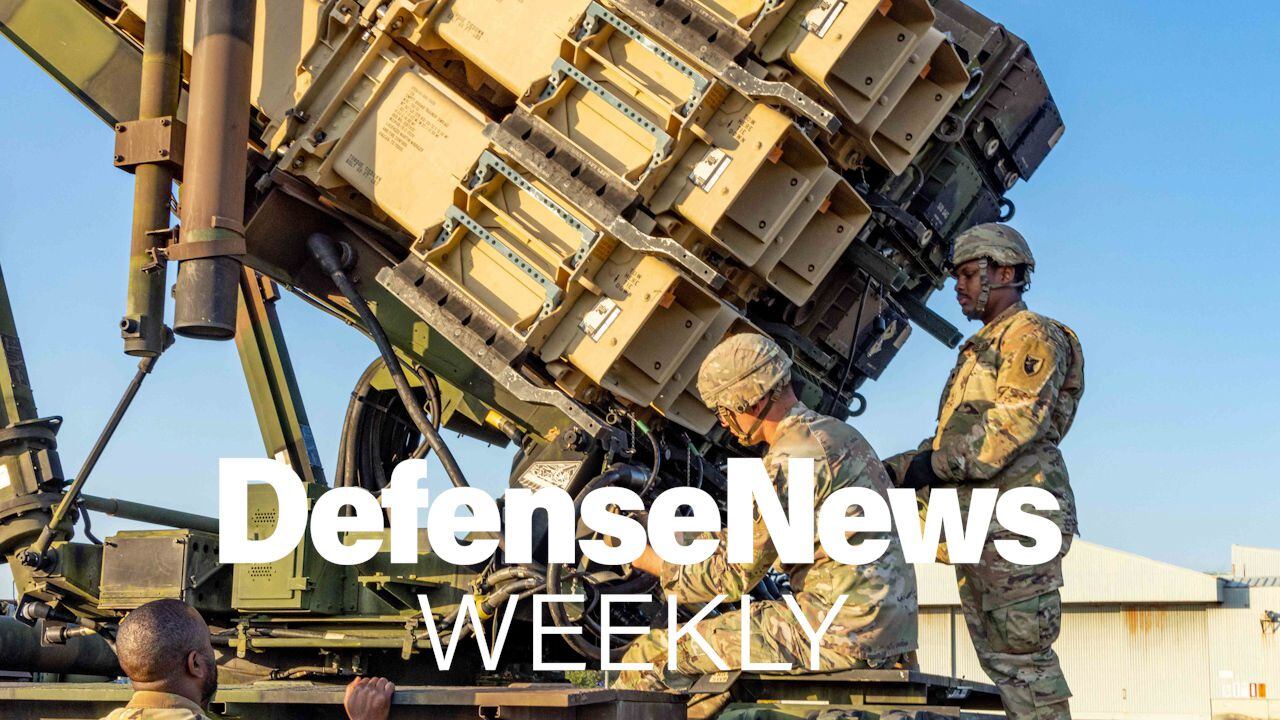WASHINGTON – Russia and China are “near peer” in name only. In some areas they already outmatch U.S. capabilities and the Army is not postured to effectively confront that problem. But they’re getting there.
Much of what those two adversaries can do to thwart U.S. efforts in Europe, the Pacific region and beyond lies in their power to conduct effective operations “left of conflict,” also known as the competition phase.
And some of their small victories, such as Russian tanks rolling into northern Syria as U.S. troops pull out, send messages that hurt U.S. prospects for beating back adversary influences.
RELATED

The Army’s deputy commander on futures and concepts, Lt. Gen. Eric Wesley, stopped short of specific comments on the recent decisions by President Donald Trump to remove U.S. forces from the area but did speak more broadly about the effects of the aftermath of that decision.
“Everything we do carries a message,” Wesley said. “It will influence the behavior of others. It’s a dialectic that’s continuing all the time.”
That competition phase work was discussed at length on a panel Tuesday at the Association of the U.S. Army’s Annual Meeting and Exposition. The panel included Wesley, Air Force Maj. Gen. Michael Fantini, Australian Maj. Gen. Kathryn Toohey and Center for Strategic and International Studies think tank Vice President Kathleen Hicks.
Wesley noted that those competition phase actions have an impact on the U.S. “market share of influence” with allies partners and the rest of the world, especially adversary action.
“We don’t want to lose that, we have to be in this space,” he said.
But with an entire globe to view and limited resources, where they are positioned and what they’re watching matters.
“Right now, I would argue we don’t have the apparatus to do that in either theater that is effective and also agile,” Wesley said.
He pointed back to the 2014 Russian takeover of Crimea as an example, when the United States lost market share, noting that the entire incident happened without Russia firing a shot.
That’s a definition of “left of conflict.”
Hicks dug a little deeper, saying that the recent Syria decision was an “example of how poorly we are executing this understanding of our information operations, and foreign policy in general.”
That challenge is exacerbated when the U.S. sees how in Crimea, Ukraine and now in Syria, that Russia has combined both action and information with “finesse” to achieve their aims, she said.
And while in most areas, the United States holds tactical overmatch in conventional conflict, its adversaries have a better ability to “take action at a national level,” Fantini said.
That tactical piece isn’t guaranteed either.
“At the tactical level we could go toe to toe, but all indications and analysis is that as that moves into the future that ability is going to erode,” Fantini said.
To meet that, Wesley and Fantini emphasized how the services are developing multi-domain operations concepts, equipment, training, partnerships and positioning.
For the Army to get after the market share problem in competition, Wesley said the service along with the Defense Department and interagency entities must adapt to the new terrain.
“The winner of the first battle of the next war likely may win the war,” Wesley said. “So, winning that first battle is far preferable to a protracted conflict with a peer competitor.”
A big part of that is conventional overmatch, partnerships and demonstrations of capabilities, Fantini said.
Wesley pointed to the Defender series of exercises in both Europe and Pacific that begin soon. Those are ways to experiment with the MDO concepts on actual terrain and demonstrate to adversaries and allies how those methods are evolving.
The Army has set its sights on 2028 as the time frame by which it will have an MDO capable force package in theater, Wesley said. And the entire Army is slated to be MDO ready by 2035.
But that will mean a type of warfare that far outpaces what generations of Army leaders have had to conduct, he said. And it won’t necessarily be the brigade and above commanders making the battlefield decisions.
“The battlefield is so hyperactive it’s still unknown,” Wesley said. “That will require us to leverage mission command on a scale that our generation has never seen if this ends in conflict with a near peer state.”
That means focusing priorities on the National Defense Strategy by aligning efforts against the pacing threat of Russia and the evolving threat of China.
Much like in the Cold War, when the U.S. prioritized the Soviet Union as the major threat and considered those preparations to also allow it to be ready for other, lesser, conventional concerns, the new strategy marshals resources towards those major adversaries.
But that doesn’t mean those are the only problems the United States has to deal with.
Hicks pointed to the strategic shifts made in 2012, which looked to pivot focus to the Asia-Pacific region.
“That’s when ISIS rolled across the border,” she said.
Todd South has written about crime, courts, government and the military for multiple publications since 2004 and was named a 2014 Pulitzer finalist for a co-written project on witness intimidation. Todd is a Marine veteran of the Iraq War.








